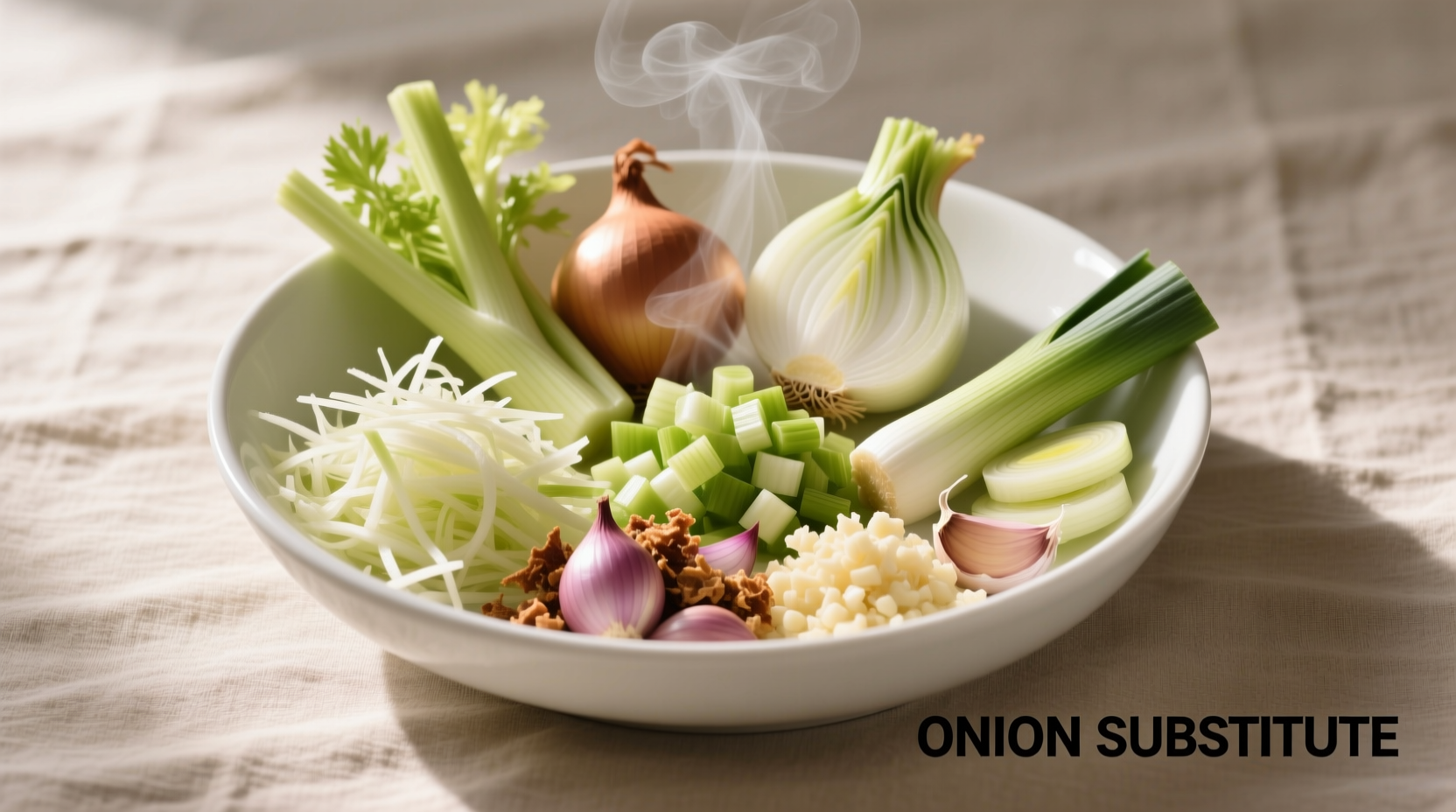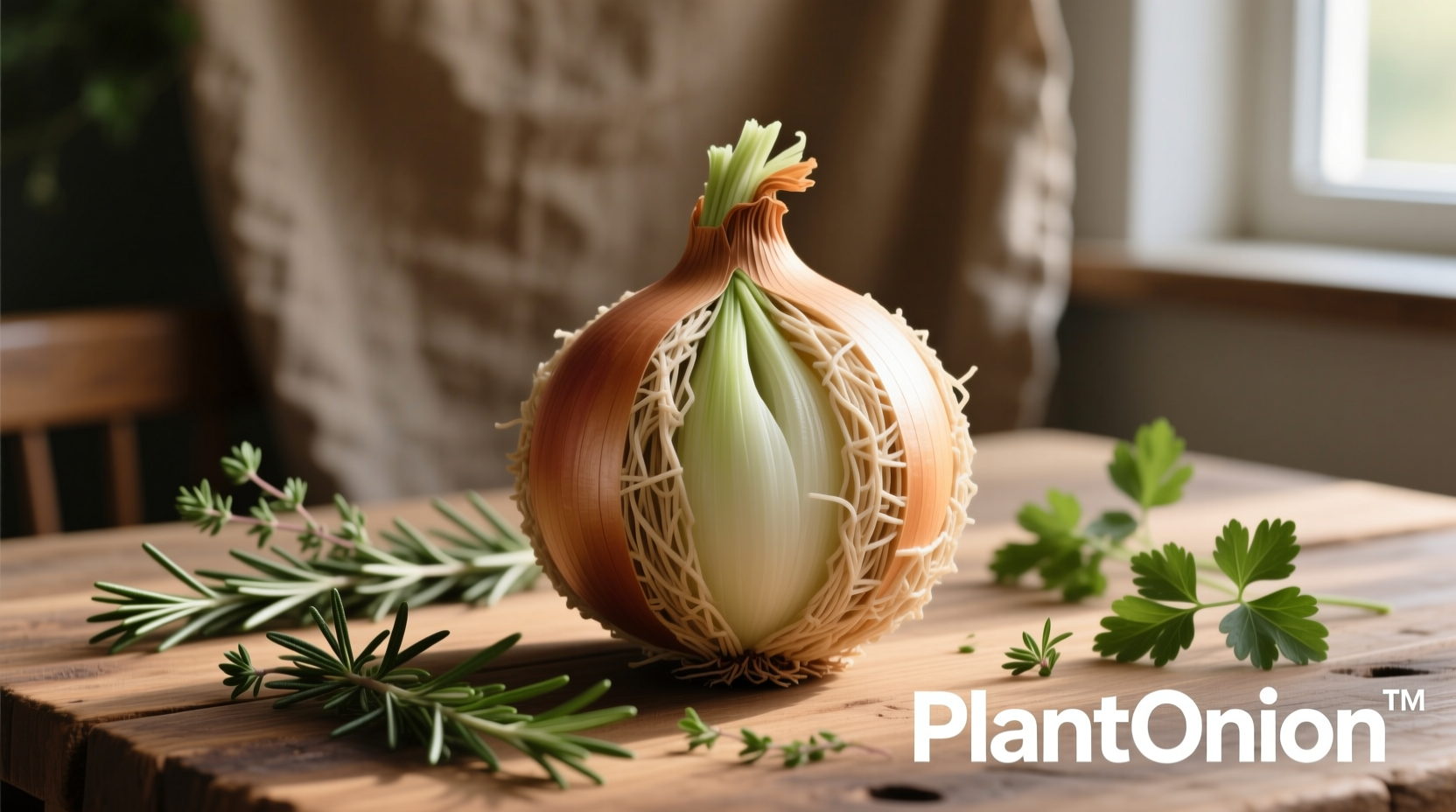Why You Might Need an Onion Alternative
Onions are kitchen staples, but sometimes you need alternatives. Whether you're managing FODMAP sensitivities, dealing with pantry shortages, or accommodating dietary restrictions, knowing effective substitutes keeps your cooking on track. Professional chefs regularly adapt recipes when onions aren't available or appropriate—this isn't compromise, it's culinary problem-solving.

Onion Substitutes by Cooking Method
Your cooking technique determines the best replacement. Raw applications require different considerations than cooked dishes, where flavor transformation occurs through the Maillard reaction and caramelization.
For Raw Applications
When recipes call for raw onions—think salsas, salads, or sandwiches—substitutes must provide similar crisp texture and pungency without overwhelming heat.
- Shallots: Milder than yellow onions with subtle garlic notes. Use 1:1 ratio in dressings and vinaigrettes
- Scallions (green onions): Use both white and green parts for color and mild flavor. Double the amount since they're less potent
- Chives: Delicate onion flavor perfect for finishing dishes. Use 3x the amount of chopped onion
- Radishes: Thinly sliced for crunch and peppery bite in tacos and salads
For Cooking and Sautéing
Cooked dishes transform onion chemistry, developing sweetness through caramelization. Your substitute should withstand heat while contributing depth.
- Leeks: White and light green parts only, sliced thin. Use 1.5x the amount of onions as they're less concentrated
- Fennel: Bulb works well in Mediterranean dishes, especially with seafood. Use equal parts, removing tough core
- Celery: Part of the "holy trinity" with carrots in many cuisines. Use equal parts with carrots for base flavor
- Asafoetida (hing): A pinch in hot oil creates onion-like aroma, essential in Jain and some Indian cooking
Special Dietary Considerations
| Substitute | Best For | Substitution Ratio | Flavor Notes |
|---|---|---|---|
| Shallots | General cooking, sauces | 1:1 | Milder, slightly sweet with garlic notes |
| Leeks | Soups, stews, creamy dishes | 1.5:1 | Sweet, delicate, less pungent |
| Asafoetida | Onion-free diets, Indian cuisine | 1/4 tsp = 1 medium onion | Pungent raw, transforms to onion-like when cooked |
| Chive Oil | Low-FODMAP diets, finishing | 2 tbsp oil = 1/2 cup onions | Subtle onion flavor without digestive issues |
Low-FODMAP Options
For those managing IBS or following Monash University's low-FODMAP protocol, standard onions trigger symptoms. These alternatives provide flavor without discomfort:
- Chive oil: Infuse olive oil with chives (which contain minimal FODMAPs) for cooking base
- Green onion tops: The green parts are low-FODMAP; use 3x the amount of white parts
- Asafoetida: Used in tiny amounts, creates onion-like flavor without FODMAPs
- Celery leaves: Finely chopped for subtle flavor in soups and stews
Allergy-Friendly Swaps
True onion allergies are rare but serious. For those with allium allergies, these options provide safe flavor:
- Mushroom powder: Adds umami depth to sauces and gravies
- Roasted garlic: Provides sweetness without allium family ingredients
- Carrot-ginger base: Sautéed carrots and ginger create complex sweetness
- Seaweed flakes: Kombu or nori adds savory depth to broths
When Substitutes Fall Short
Not all onion replacements work universally. Understanding these limitations prevents recipe failures:
- Baking applications: Onion's moisture content affects texture—substitutes often require liquid adjustments
- Pickling recipes: Onion's cellular structure changes during pickling; leeks or fennel work better than shallots
- Caramelized dishes: Shallots caramelize faster than yellow onions; require closer monitoring
- Raw applications in Latin cuisine: White onion's sharp bite is distinctive; scallions lack the same impact
Professional Chef Techniques
Top chefs use strategic approaches when substituting onions:
- Layering flavors: Combine multiple substitutes (e.g., asafoetida plus chive oil) to recreate complex onion profile
- Temperature control: Add substitutes at different cooking stages—asafoetida first in hot oil, leeks later
- Acid balancing: Onion's natural sugars balance acidity; when substituting, adjust with small sugar increments
- Texture consideration: For dishes relying on onion's crunch, add jicama or water chestnuts for similar mouthfeel
Common Substitution Mistakes
Avoid these frequent errors that compromise your dishes:
- Using equal amounts of stronger substitutes: Asafoetida is potent—never use more than 1/4 teaspoon
- Substituting raw when cooking is needed: Raw leeks lack cooked onion's sweetness; always cook them properly
- Ignoring regional authenticity: In Mexican cooking, white onion has distinctive sharpness that yellow onions don't replicate
- Overcompensating with salt: Onion adds natural sweetness; excess salt makes substitutes taste artificial
Recipe-Specific Recommendations
Tailor your substitute to the dish for best results:
- Onion soup: Use leeks and mushrooms for depth; add 1/2 teaspoon asafoetida for authentic flavor
- Guacamole: Double scallions and add pinch of cumin to compensate for missing white onion
- Meatloaf: Finely diced celery and carrots (mirepoix) with 1/4 teaspoon asafoetida
- Curries: Shallots provide similar texture and mild sweetness without overpowering spices
- Salad dressings: Shallot vinegar (steep shallots in vinegar 30 minutes) for complex flavor
Frequently Asked Questions
Can I use garlic powder instead of onions?
Garlic powder doesn't replicate onion flavor. For onion substitution, use 1 teaspoon onion powder per medium onion. Garlic creates a different flavor profile and shouldn't be used as direct replacement.
How do I substitute onions in French onion soup?
Use 3 cups sliced leeks (white parts only) plus 1 cup sliced mushrooms. Add 1/4 teaspoon asafoetida when sautéing. The leeks provide sweetness while mushrooms add depth that mimics caramelized onions.
What's the best onion substitute for someone with IBS?
Chive-infused oil is the most effective low-FODMAP substitute. Use 2 tablespoons of oil per 1/2 cup of onions. The green parts of chives contain minimal FODMAPs while providing authentic onion flavor without digestive issues.
Can I use onion powder as a fresh onion substitute?
Yes, use 1 tablespoon onion powder for every medium fresh onion. Reconstitute with 2 tablespoons water for cooked dishes. Note that powder lacks fresh onion's texture and contains more concentrated flavor, so adjust other seasonings accordingly.
Why does my onion substitute taste bitter?
Bitterness usually comes from overcooking leeks or fennel, or using too much asafoetida. Leeks should cook just until translucent, not browned. Asafoetida should never exceed 1/4 teaspoon. If bitterness occurs, add small amounts of acid (lemon juice or vinegar) to balance flavors.











 浙公网安备
33010002000092号
浙公网安备
33010002000092号 浙B2-20120091-4
浙B2-20120091-4